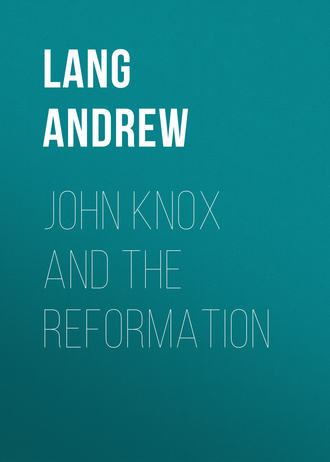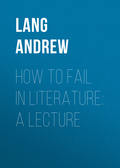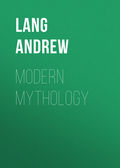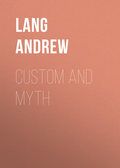
Lang Andrew
John Knox and the Reformation
APPENDIX A: ALLEGED PERFIDY OF MARY OF GUISE
The Regent has usually been accused of precipitating, or causing the Revolution of 1559, by breaking a pledge given to the Protestants assembled at Perth (May 10-11, 1559). Knox’s “History” and a letter of his are the sources of this charge, and it is difficult to determine the amount of truth which it may contain.
Our earliest evidence on the matter is found in a letter to the English Privy Council, from Sir James Croft, commanding at Berwick. The letter, of May 19, is eight days later than the riots at Perth. It is not always accurately informed; Croft corrects one or two statements in later despatches, but the points corrected are not those with which we are here concerned. 385 Neither in this nor in other English advices do I note any charge of ill faith brought against the Regent on this occasion. Croft says that, on Knox’s arrival, many nobles and a multitude of others repaired to Dundee to hear him and others preach. The Regent then summoned these preachers before her to Stirling, 386 but as they had a “train” of 5000 or 6000, she “dismissed the appearance,” putting the preachers to the horn, and commanding the nobility to appear before her in Edinburgh. The “companies” then retired and wrecked monasteries at Perth. The Lords and they had previously sent Erskine of Dun to the Regent, offering to appear before her with only their household servants, to hear the preachers dispute with the clergy, if she would permit. The Regent, “taking displeasure with” Erskine of Dun, bade him begone out of her sight. He rode off (to Perth), and she had him put to the horn (as a fact, he was only fined in his recognisances as bail for one of the preachers). The riots followed his arrival in Perth.
Such is our earliest account; there is no mention of a promise broken by the Regent.
Knox himself wrote two separate and not always reconcilable accounts of the first revolutionary explosion; one in a letter of June 23 to Mrs. Locke, the other in a part of Book II. of his “History,” composed at some date before October 23, 1559. That portion of his “History” is an apologia for the proceedings of his party, and was apparently intended for contemporary publication. 387
This part of the “History,” therefore, as the work of an advocate, needs to be checked, when possible, by other authorities. We first examine Knox’s letter of June 23, 1559, to Mrs. Locke. He says that he arrived in Edinburgh on May 2, and, after resting for a day, went (on May 4) to the brethren assembled at Dundee. They all marched to Perth, meaning thence to accompany the preachers to their day of law at Stirling, May 10. But, lest the proceeding should seem rebellious, they sent a baron (Erskine of Dun, in fact) to the Regent, “with declaration of our minds.” The Regent and Council in reply, bade the multitude “stay, and not come to Stirling.. and so should no extremity be used, but the summons should be continued” (deferred) “till further advisement. Which, being gladly granted of us, some of the brethren returned to their dwelling-places. But the Queen and her Council, nothing mindful of her and their promise, incontinent did call” (summon) “the preachers, and for lack of their appearance, did exile and put them and their assistants to the horn… ” 388
It would be interesting to know who the Regent’s Council were on this occasion. The Reformer errs when he tells Mrs. Locke that the Regent outlawed “the assisters” of the preachers. Dr. M‘Crie publishes an extract from the “Justiciary Records” of May 10, in which Methuen, Christison, Harlaw, and Willock, and no others, are put to the horn, or outlawed, in absence, for breach of the Regent’s proclamations, and for causing “tumults and seditions.” No one else is put to the horn, but the sureties for the preachers’ appearance are fined. 389
In his “History,” Knox says that the Regent, when Erskine of Dun arrived at Stirling as an emissary of the brethren, “began to craft with him, soliciting him to stay the multitude, and the preachers also, with promise that she would take some better order.” Erskine wrote to the brethren, “to stay and not to come forward, showing what promise and hope he had of the Queen’s Grace’s favours.” Some urged that they should go forward till the summons was actually “discharged,” otherwise the preachers and their companions would be put to the horn. Others said that the Regent’s promises were “not to be suspected.. and so did the whole multitude with their preachers stay… The Queen, perceiving that the preachers did not appear, began to utter her malice, and notwithstanding any request made on the contrary, gave command to put them to the horn..” Erskine then prudently withdrew, rode to Perth, and “did conceal nothing of the Queen’s craft and falsehood.” 390
In this version the Regent bears all the blame, nothing is said of the Council. “The whole multitude stay” – at Perth, or it may perhaps be meant that they do not come forward towards Stirling. The Regent’s promise is merely that she would “take some better order.” She does not here promise to postpone the summons, and refuses “any request made” to abstain from putting them to the horn. The account, therefore, is somewhat more vague than that in the letter to Mrs. Locke. Prof. Hume Brown puts it that the Regent “in her understanding with Erskine of Dun had publicly cancelled the summons of the preachers for the 10th of May,” which rather overstates the case perhaps. That she should “publicly cancel” or “discharge” the summons was what a part of the brethren desired, and did not get. 391
We now turn to a fragmentary and anonymous “Historie of the Estate of Scotland,” concerning which Prof. Hume Brown says, “Whoever the author may have been, he writes as a contemporary, or from information supplied by a contemporary.. what inspires confidence in him is that certain of his facts not recorded by other contemporary Scottish historians are corroborated by the despatches of d’Oysel and others in Teulet.” 392
I elsewhere 393 give reasons for thinking that this “Historie” is perhaps the chronicle of Bruce of Earl’s Hall, a contemporary gentleman of Fife. I also try to show that he writes, on one occasion, as an eye-witness.
This author, who is a strong partisan of the Reformers, says nothing of the broken promise of the Regent and Council. He mentions the intention to march to Stirling, and then writes: “And although the Queen Regent was most earnestly requested and persuaded to continue” – that is to defer the summons – “nevertheless she remained wilful and obstinate, so that the counsel of God must needs take effect. Shortly, the day being come, because they appeared not, their sureties were outlawed, and the preachers ordered to be put to the horn. The Laird of Dun, who was sent from Perth by the brethren, perceiving her obstinacy, they” (who?) “turned from Stirling, and coming to Perth, declared to the brethren the obstinacy they found in the Queen… ”
This sturdy Protestant’s version, which does not accuse the Regent of breaking troth, is corroborated by a Catholic contemporary, Lesley, Bishop of Ross. He says that Erskine of Dun was sent to beg the Regent not to impose a penalty on the preachers in their absence. But as soon as Dun returned and Knox learned from him that the Regent would not grant their request, he preached the sermon which provoked the devastation of the monasteries. 394 Buchanan and Spottiswoode follow Knox, but they both use Knox’s book, and are not independent witnesses.
The biographers of Knox do not quote “The Historie of the Estate of Scotland,” where it touches on the beginning of the Revolution, without disparaging the Regent’s honour. We have another dubious witness, Sir James Melville, who arrived on a mission from France to the Regent on June 13; he left Paris about June 1. This is the date of a letter 395 in which Henri II. offers the Regent every assistance in the warmest terms. Melville writes, however, that in his verbal orders, delivered by the Constable in the royal presence, the Constable said, “I have intelligence that the Queen Regent has not kept all things promised to them.” But Melville goes on to say that the Constable quoted d’Elboeuf’s failure to reach Scotland with his fleet, as a reason for not sending the troops which were promised by Henri. As d’Elboeuf’s failure occurred long after the date of the alleged conversation, the evidence of Melville is here incorrect. He wrote his “Memoirs” much later, in old age, but Henri may have written to the Regent in one sense, and given Melville orders in another. 396
We find that Knox’s charge against the Regent is not made in our earliest information, Croft’s letter of May 19: is not made by the Protestant (and, we think, contemporary) author of the “Historie,” and, of course, is not hinted at by Lesley, a Catholic. We have seen throughout that Knox vilifies Mary of Guise in cases where she is blameless. On the other hand, Knox is our only witness who was at Perth at the time of the events, and it cannot be doubted that what he told Mrs. Locke was what he believed, whether correctly or erroneously. He could believe anything against Mary of Guise. Archbishop Spottiswoode says, “The author of the story” (“History”) “ascribed to John Knox in his whole discourse showeth a bitter and hateful spite against the Regent, forging dishonest things which were never so much as suspected by any, setting down his own conjectures as certain truths, yea, the least syllable that did escape her in passion, he maketh it an argument of her cruel and inhuman disposition.. ” 397 In the MS. used by Bishop Keith, 398 Spottiswoode added, after praising the Regent, “these things I have heard my father often affirm”; he had the like testimony “from an honourable and religious lady, who had the honour to wait near her person.” Spottiswoode was, therefore, persuaded that the “History” “was none of Mr. Knox his writings.” In spite of this opinion, Spottiswoode, writing about 1620-35, accepts most of the hard things that Knox says of the Regent’s conduct in 1559, and indeed exaggerates one or two of them; that is, as relates to her political behaviour, for example, in the affair of the broken promise of May 10. It may be urged that here Spottiswoode had the support of the reminiscences of his father, a Superintendent in the Knoxian church.
APPENDIX B: FORGERY PROCURED BY MARY OF GUISE
In the writer’s opinion several of Knox’s accusations of perfidy against the Regent, in 1559, are not proved, and the attempts to prove them are of a nature which need not be qualified. But it is necessary to state the following facts as tending to show that the Regent was capable of procuring a forgery against the Duke of Chatelherault. A letter attributed to him exists in the French Archives, 399 dated Glasgow, January 25, 1560, in which the Duke curries favour with Francis II., and encloses his blank bond, un blanc scellé, offering to send his children to France. 400 On January 28, the Regent writes from Scotland to de Noailles, then the French Ambassador to England, bidding him to mention this submission to Elizabeth, and even show the Duke’s letter and blank bond, that Elizabeth may see how little he is to be trusted. Now how could the Regent, on January 28, have a letter sent by the Duke to France on January 25? She must have intercepted it in Scotland. 401 Next, on March 15, 1560, the Duke, writing to Norfolk, denies the letter attributed to him by the French. 402 He said that any one of a hundred Hamiltons would fight M. de Seurre (the French Ambassador who, in February, succeeded de Noailles) on this quarrel. 403
There exists a document, in the cipher of Throckmorton, English Ambassador in France, purporting to be a copy of a letter from the Regent to the Duc and Cardinal de Guise, dated Edinburgh, March 27, 1560. 404 The Regent, at that date, was in Leith, not in Edinburgh Castle, where she went on April 1. In that letter she is made to say that de Seurre has “very evil misunderstood” the affair of the letter attributed to Chatelherault. She had procured “blanks” of his “by one of her servants here” (at Leith) “to the late Bishop of Ross”; the Duke’s alleged letter and submission of January 25 had been “filled up” on a “blank,” the Duke knowing nothing of the matter.
This letter of the Regent, then, must also, if authentic, have been somehow intercepted or procured by Throckmorton, in France. It is certain that Throckmorton sometimes, by bribery, did obtain copies of secret French papers, but I have not found him reporting to Cecil or Queen Elizabeth this letter of the Regent’s. The reader must estimate for himself the value of that document. I have stated the case as fairly as I can, and though the evidence against the Regent, as it stands, would scarcely satisfy a jury, I believe that, corrupted by the evil example of the Congregation, the Regent, in January 1560, did procure a forgery intended to bring suspicion on Chatelherault. But how could she be surprised that de Seurre did not understand the real state of the case? The Regent may have explained the true nature of the affair to de Noailles, but it may have been unknown to de Seurre, who succeeded that ambassador. Yet, how could she ask any ambassador to produce a confessed forgery as genuine?






